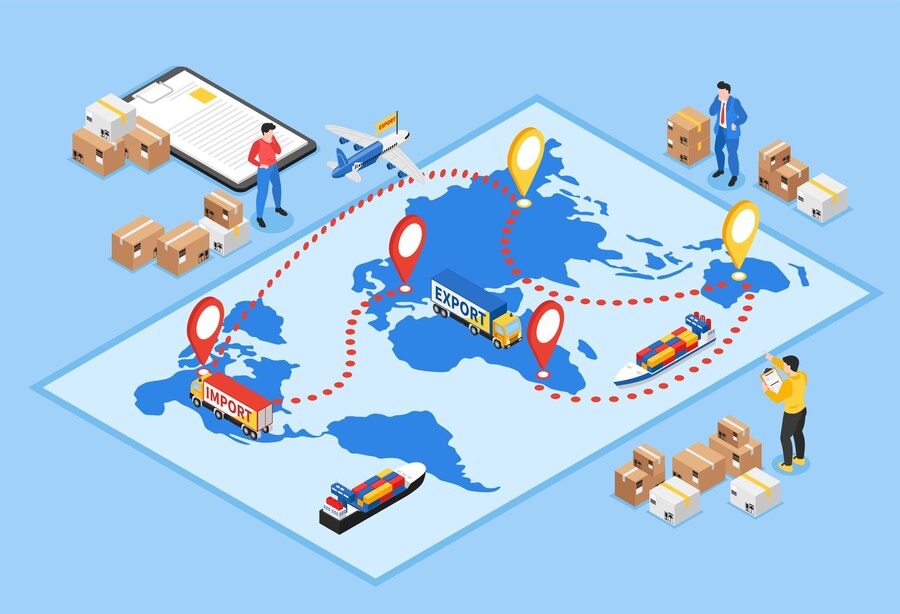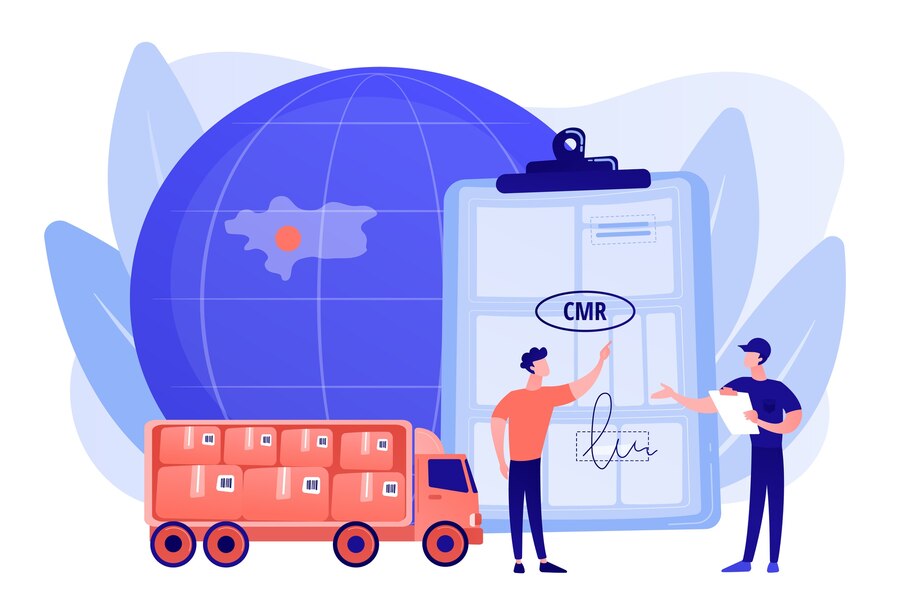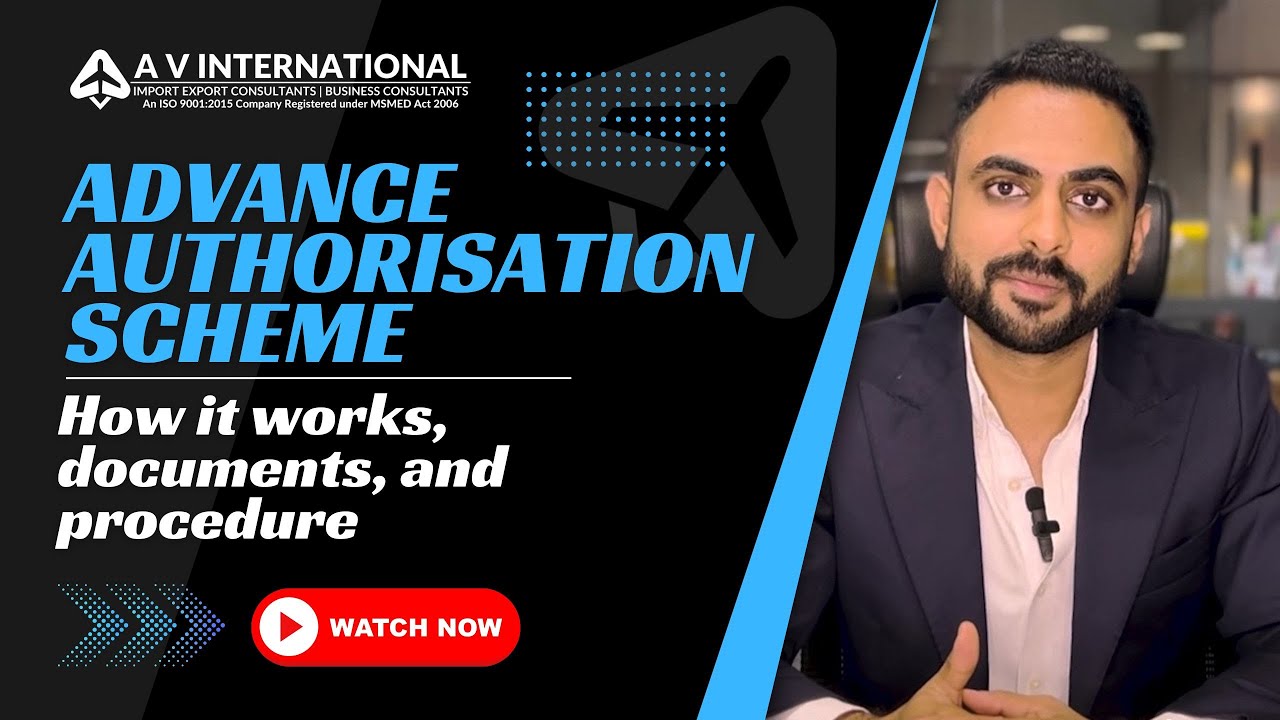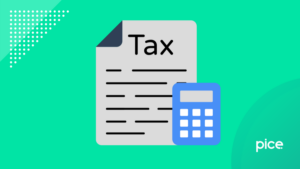Advance Authorization Scheme for Indian Exporters
- 11 Aug 24
- 24 mins

Advance Authorization Scheme for Indian Exporters
Key Takeaways
- Duty-Free Imports: Enables the duty-free import of inputs for export production, reducing manufacturing costs.
- Global Competitiveness: Helps Indian exports become more competitive by lowering input costs.
- Eligibility for Manufacturers and Exporters: Accessible to both manufacturers and merchant exporters under specific criteria.
- Flexible Input Sourcing: Offers flexibility through Advance Release Orders and Invalidation Letters for sourcing inputs.
- Mandatory Export Obligation: links benefits to export performance, requiring fulfillment of specified export obligations.
The Advance Authorization Scheme is a kind of flag for manufacturers, giving them an opportunity to make important savings on duty tax as a result of duty-free trade in raw materials.
This community, as one of the components of its foreign trade policy, aims to make export production as expensive as possible by bringing down the cost of production.

Eligibility for Advance Authorization Scheme
Eligibility for the Advance Authorization Scheme is designed to cater to manufacturers and exporters with the intent of making India's trade more competitive on the global stage. Here's a detailed look at who can avail of this scheme:
Manufacturers and Exporters
- Manufacturers: Companies or entities engaged in producing goods in India that are destined for export can apply for Advance Authorization. This enables them to import raw materials and inputs duty-free, provided these are used in the manufacture of export products.
- Merchant Exporters: These are entities that trade goods internationally without necessarily manufacturing them. Merchant exporters can apply for Advance Authorization if they tie up with domestic manufacturers. The scheme allows them to import inputs duty-free on behalf of the manufacturer for the production of export goods.
Criteria
- Export Obligation: Applicants must agree to carry out an export obligation (EO) as laid out by the Directorate General of Foreign Trade (DGFT). This obligation requires the exporter to export finished goods of a certain value within a time frame specified by the authorization.
- Product Specificity: The scheme is available for most products but is subject to certain restrictions based on the product and the sector. Applicants must ensure their product is eligible under the scheme.
- Value Addition: The scheme mandates a minimum value addition to the imported inputs before export. The precise proportion of value addition necessary varies by product and sector, but it is critical for the authorization's validity.
- Past Export Performance: While not mandatory for all categories, some applicants may need to demonstrate a satisfactory track record of trade to qualify for the scheme. This criterion is primarily aimed at ensuring that the benefits of the scheme are extended to experienced exporters with a commitment to contributing to India's export growth.
Special Considerations
- Annual Requirement: Exporters with a consistent track record and a predictable requirement of inputs may apply for Advance Authorization on an annual basis, simplifying the process and reducing paperwork.
- Actual User Condition: The scheme is subject to an actual user condition, meaning the benefits (duty-free imports) are non-transferable and must be utilized by the applicant themselves in the production of export goods.
Documentation and Compliance
Applicants are required to provide detailed documentation, including an export order or plan, list of inputs required, and proof of manufacturing capability or agreement with a manufacturer (for merchant exporters). Compliance with the scheme's requirements is strictly monitored, and failure to meet the export obligation can result in penalties or reversal of duty benefits.
Duty Exemption Scheme
The Advance Authorization Scheme offers a significant benefit to exporters in the form of duty exemptions. These exemptions are designed to reduce the cost of raw materials and inputs, thereby enhancing the competitiveness of Indian trade on the global stage.
Here are the key points regarding the duty exemptions under the Advance Authorization Scheme:
- Basic Customs Duty Exemption: This is perhaps the most significant exemption, where no basic customs duty is charged on the import of raw materials and inputs used in the production of export goods. This directly reduces the cost of materials, making the finished products more competitive in international markets.
- Additional Customs Duty (CVD) Exemption: Additional customs duty or countervailing duty, which is equivalent to the domestic excise duty, is also exempt. This means that the inputs are treated as if they were sourced domestically, without the additional burden of excise-equivalent duties on imported materials.
- Education Cess Exemption: The education cess, which is a surcharge on the customs duty, is also waived off under this scheme. Although it might seem minor, every little saving contributes to reducing the overall cost of production.
- Anti-dumping Duty and Safeguard Duty Exemption: For certain goods, anti-dumping or safeguard duties are imposed to protect domestic industries from unfair international competition. Under the Advance Authorization Scheme, imports of inputs for the production of export goods are exempted from such duties, provided the finished goods are exported.
- Social Welfare Surcharge Exemption: Recently, the social welfare surcharge, which is levied on imported goods for the purpose of financing health and education initiatives, has also been exempted for imports under this scheme.
Duty-free Importable Items Under the Scheme
Under the Advance Authorization Scheme, a wide array of items can be imported duty-free, provided these items are used in the manufacture of products destined for export. This provision is aimed at reducing the cost of production for exporters by allowing them to procure high-quality raw materials and inputs without the additional financial burden of duties.

The scheme covers various categories of importable items, with the goal of supporting the complete production process. Here are the key categories of duty-free importable items under this scheme:
- Raw Materials: Fundamental to the manufacturing process, raw materials that are required to produce the final export product can be imported without duty. This includes all kinds of primary materials specific to the exporter's product requirements.
- Intermediates: These are semi-processed materials that will undergo further manufacturing processes before becoming part of the final product. Intermediates are crucial for industries that rely on complex manufacturing processes involving multiple stages.
- Components and Parts: For industries involved in the assembly of finished products, components and parts that are essential for the assembly can be imported duty-free. This is particularly beneficial for the electronics, automotive, and machinery sectors.
- Consumables: Certain consumable items used in the manufacturing process, which might not necessarily be part of the final product, can also be imported duty-free. This includes lubricants, coolants, and other materials essential for maintaining the quality and efficiency of the production process.
- Packaging Materials: Recognizing the importance of packaging in the export market, packaging materials that are required for packing the export product can also be imported without duty. This ensures that the finished goods meet the global standards of packaging for international trade.
- Fuel, Oil, and Energy Sources: Specific schemes under the Advance Authorization allow for the duty-free import of fuel, oil, and other energy sources used in the production of the export product, recognizing their significant cost to the overall production expenses.
- Catalysts and Chemicals: For chemical processes and manufacturing, catalysts and essential chemicals that are consumed during the production of the export goods are eligible for duty-free import.
User Conditions
The Advance Authorization Scheme, aimed at promoting trade by allowing duty-free import of inputs used in the manufacture of export products, comes with specific user conditions.
These conditions are designed to ensure that the benefits of the scheme are utilized correctly and contribute to the intended objective of boosting India's trade. Here are the key user conditions associated with the Advance Authorization Scheme:
- Export Obligation: The most critical user condition is the export obligation. Beneficiaries of the scheme must export the finished goods within a specified period, usually 18 to 24 months from the date of issuance of the advance authorization. The quantity and value of the trade must meet or exceed the stipulated requirements based on the value and quantity of inputs imported duty-free.
- Value Addition: The scheme mandates a minimum value addition to the exported products. Value addition is defined as the percentage increase in the value of the export product over the value of the imported inputs used in its production. The minimum value addition required varies depending on the product and sector, but it is essential to ensure that the scheme promotes genuine manufacturing and contributes to the economy.
- Actual User Condition: The benefits of the Advance Authorization are granted on an 'actual user' basis. This implies that the authorization holder must use the inputs imported duty-free under the scheme in the production of the export product. They cannot be sold or transferred to another party. This condition ensures that the scheme benefits genuine manufacturers and exporters.
- Documentation and Reporting: Authorization holders are required to maintain accurate records of imported inputs and the resultant trade. They must submit periodic reports to the Directorate General of Foreign Trade (DGFT) or other designated authorities, detailing their compliance with the scheme's conditions, including proof of trade.
- Re-Export of Defective Goods: In cases where exported goods are found to be defective, the scheme allows for the re-importation of such goods for repair or replacement. However, the re-export of the corrected goods must be completed within a specified period to comply with the export obligation.
- Surrender of Authorization: If the authorization holder is unable to fulfill the export obligation, they have the option to surrender the advance authorization. In such cases, they must pay the applicable customs duties on the imported inputs, along with interest, as a penalty for non-fulfillment of the export obligation.
- Third-Party trade: While the scheme primarily requires that the export products be manufactured and exported by the authorization holder, it does allow for third-party trade under certain conditions. However, the responsibility for fulfilling the export obligation remains with the authorization holder.
Minimum Value Addition
The scheme mandates a minimum value addition, ensuring that the benefits are utilized to genuinely enhance the value of trade, thus contributing to the economy.
- Minimum Value Addition (MVA) is defined as the minimum percentage increase in the value of imported raw materials or inputs after they have been processed or incorporated into the final exported product. It's calculated as a percentage of the cost of imported inputs in relation to the FOB (Free On Board) value of the exported products.
- Calculation: The formula used to calculate the value addition is:
Value Addition = (CIF Value of Imports - FOB Value of Export−CIF Value of Imports)×100
where CIF stands for Cost, Insurance, and Freight, indicating the total cost of goods imported.
- Purpose: The requirement for minimum value addition is designed to ensure that the scheme promotes actual manufacturing or processing activities within India, rather than merely allowing for the re-export of imported goods. This aligns with the broader objectives of enhancing India's manufacturing capabilities, generating employment, and adding to the country’s export growth.
- Sector-Specific Requirements: The specific minimum value addition percentage varies across different sectors and products, reflecting the varying degrees of processing that different goods undergo. For instance, products in the jewelry sector might have a different required percentage compared to agricultural or electronic goods.
- Compliance: Exporters utilizing the Advance Authorization Scheme must declare their expected value addition at the time of application and demonstrate compliance with the minimum value addition requirement through their export performance. Failure to meet the specified minimum value addition can lead to penalties or the need to fulfill the obligation through other means, such as paying the duties that were initially exempted.
- Flexibility in Certain Cases: In some instances, the Directorate General of Foreign Trade (DGFT) may allow for lower value addition requirements based on the nature of the product and market conditions. Such exceptions are considered on a case-by-case basis to support exporters while ensuring the integrity of the scheme’s objectives.
Free Provision of Inputs
This provision allows exporters to import raw materials and other inputs without paying duties, under the condition that these inputs are used in the manufacture of products destined for export. Here's how the free provision of inputs benefits exporters and the broader principles it encompasses:
- Cost Reduction: By allowing the duty-free import of inputs, the scheme directly reduces the production costs for exporters. This is because the cost of raw materials often constitutes a significant portion of the total production cost. Removing the duty component can make a substantial difference in the competitiveness of the final product in the international market.
- Increased Competitiveness: With reduced production costs, Indian exporters can price their products more competitively on the global stage. This not only helps in retaining existing markets but also in penetrating new ones, thus expanding the export footprint of Indian goods.
- Enhanced Quality of Products: Free provision of inputs allows exporters to source high-quality raw materials from international markets without worrying about the cost implications of duties. This can lead to an improvement in the quality of the exported products, further enhancing their appeal in global markets.
- Flexibility in Sourcing: Exporters are not restricted to sourcing inputs from domestic markets, which may not always offer the best prices or quality. The scheme offers the flexibility to source from anywhere in the world, ensuring that the production of export goods is not compromised due to local supply constraints.
- Encouragement of Value-Added trade: The scheme encourages exporters to undertake the production of value-added goods. By providing inputs duty-free, it incentivizes the manufacture of products that have undergone significant transformation, thus adding more value before export.
- Support for Small and Medium Enterprises (SMEs): SMEs, which may not have the financial bandwidth to bear high input costs, particularly benefit from this provision. It levels the playing field, allowing smaller players to compete with larger ones in the international market.
- Compliance with Export Obligation: To avail of the benefits of the free provision of inputs, exporters must fulfill an export obligation, ensuring that the benefits of the scheme are directly linked to trade. This ties the benefits to actual export performance, aligning with the scheme's goal to boost trade.
Export Obligation Period
The Export Obligation Period is the specified duration given to exporters, starting from the date of issuance of the Advance Authorization, within which they must complete their export obligation, i.e., export the predetermined value or quantity of goods manufactured using the imported inputs.

- Standard Period: Typically, the EOP is 18 months for most products and sectors. However, this period can vary based on the nature of the export product or the specific requirements of the exporting sector. The Directorate General of Foreign Trade (DGFT) may issue notifications altering this standard period for certain categories of goods or under special circumstances.
- Extension of EOP: Exporters can apply for an extension of the Export Obligation Period in cases where unforeseen circumstances or genuine difficulties prevent them from fulfilling their export obligations within the standard period. Such extensions are granted on a case-by-case basis, and the DGFT reviews the reasons for the delay before granting an extension.
- Early Fulfillment: If an exporter fulfills the export obligation ahead of the specified period, they are eligible to apply for the redemption of their Advance Authorization. Early fulfillment is encouraged, as it demonstrates efficient use of the scheme and contributes positively to the country’s export performance.
- Calculation of Export Obligation: The export obligation is calculated in terms of value addition or quantity, depending on the terms of the Advance Authorization issued. Exporters must ensure that the trade made under this scheme meet the minimum value addition criteria specified in their authorization.
- Consequences of Non-fulfillment: Failure to meet the export obligation within the EOP or its extensions can lead to penalties, including the imposition of duties that were initially exempted, along with interest. It is, therefore, crucial for exporters to plan their production and export activities carefully to meet their obligations within the stipulated time.
- Documentation and Proof: Upon completion of the export obligation, exporters must submit proof of trade, including shipping bills and bank realization certificates, to the DGFT to demonstrate compliance with the EOP requirements. Successful submission and verification of these documents lead to the formal closure of the export obligation against the Advance Authorization.
Annual Requirement
For those with consistent export orders, the scheme accommodates an annual requirement feature, enabling a smoother and more efficient procurement process for inputs.
| Feature | Description |
| Predictable Input Needs | Facilitates bulk procurement based on steady export performance, allowing for better planning and optimization of production costs. |
| Streamlined Procurement Process | Reduces the need for multiple applications for each consignment, saving time and administrative effort. |
| Flexibility and Efficiency | Offers flexibility in input usage over the financial year, enhancing operational efficiency and production flow. |
| Reduced Working Capital Pressure | Duty-free imports of inputs ease the burden on working capital, aiding in improved cash flow management for exporters. |
| Enhanced Planning and Forecasting | Allows exporters to accurately forecast production and export schedules, ensuring strategic market engagement and timely order fulfillment. |
| Eligibility for Other Benefits | Meeting the annual requirement may qualify exporters for additional government incentives, supporting broader export activities. |
| Compliance with Export Obligation | Ensures that benefits are tied to actual export performance, aligning with the scheme's objective to promote trade. |
| Customized Solutions | Provides solutions tailored to specific industry needs, enhancing the competitiveness of Indian trade in the global market. |
Advance Release Order (ARO) and Invalidation Order
The ARO facilitates early input procurement, while the invalidation order allows for domestic sourcing under certain conditions, offering flexibility to exporters.
Advance Release Order (ARO)

An ARO is issued to an Advance Authorization holder, allowing them to import duty-free inputs directly from a supplier or through a domestic sourcing mechanism. This order is issued against an existing Advance Authorization and specifies the quantity and type of inputs that can be imported without duty.
- Purpose: The main purpose of the ARO is to expedite the import process of duty-free inputs. It allows exporters to quickly procure necessary materials for production without waiting for the entire documentation and approval process of a new Advance Authorization.
- Process: Once an Advance Authorization is granted, the holder can request an ARO for direct import or domestic procurement of inputs. The ARO is then used to import or procure the specified inputs without paying customs duty.
Invalidation Order
An Invalidation Order is issued to allow the holder of an Advance Authorization to procure inputs domestically rather than importing them. This order invalidates the authorization for direct import of specified inputs, thereby enabling the purchase of those inputs from the domestic market.
- Purpose: The purpose of the Invalidation Order is to provide flexibility to exporters in sourcing their inputs. If it is more cost-effective or logistically feasible to source inputs domestically, an Invalidation Order allows for this change without losing the benefits of the Advance Authorization Scheme.
- Process: To obtain an invalidation order, the advance authorization holder must provide details of the inputs they wish to source domestically. Upon approval, the order is issued, and the specified inputs can be procured from the domestic market without paying duty, under the condition that they are used for export production.
Back-to-Back Inland Letter of Credit
A Back-to-Back Inland Letter of Credit (LC) is essentially a secondary letter of credit issued based on the security of an original letter of credit. In the domestic context, it allows exporters to procure goods from local suppliers using the creditworthiness of the original LC, which is typically meant for international trade.
Purpose
The primary purpose of a Back-to-Back Inland Letter of Credit is to provide assurance to domestic suppliers about the payment for goods supplied to exporters. It acts as a guarantee that the exporters will fulfill their payment obligations, leveraging the original LC meant for exporting goods internationally.
Process
- Original LC Issuance: An exporter receives an LC from an overseas buyer, which guarantees payment for goods to be exported.
- Application for Back-to-Back LC: The exporter then applies for a Back-to-Back Inland LC from their bank, using the original LC as collateral. This new LC is directed towards domestic suppliers.
- Procurement of Inputs: The exporter uses the Back-to-Back Inland LC to purchase inputs from domestic suppliers without immediate cash payment. By means of the LC that the bank issues, the suppliers are guaranteed payment.
- Production and Export: The exporter manufactures the goods using the procured inputs and exports them to the overseas buyer.
- Settlement: Once the exported goods are accepted by the overseas buyer, payment is made through the original LC, which then allows the bank to settle the Back-to-Back Inland LC with the domestic suppliers.
Significance
- Risk Mitigation: It mitigates the risk for domestic suppliers by providing them with a bank guarantee for their goods.
- Cash Flow Management: Exporters can manage their cash flows more efficiently, as they don’t need to make immediate payments for raw materials or inputs.
- Encourages Domestic Sourcing: This mechanism encourages exporters to source inputs domestically, supporting local industries and supply chains.
- Enhances Export Efficiency: By ensuring that exporters can secure inputs reliably and without upfront payment, it enhances the overall efficiency and competitiveness of the export sector.
Prohibited Commodities
Under the Advance Authorization Scheme, certain commodities are explicitly prohibited from being imported duty-free. Therefore, it is done to comply with both domestic laws and international rules, thus keeping trade deals ethical and sustainable.
Prohibited commodities typically include items that could harm the environment, endangered species, goods subject to international bans, and items that may affect public health and safety.
Such goods are not allowed in the scheme, as it helps to ensure that the benefits promised by the plan do not become available for commodities that go against societal morality, international trade rules, or anything else.
Admissibility of Drawback
The scheme allows exporters to claim a drawback on certain duties paid on inputs that are used in the production of export goods. This option, along with currency risk mitigation, has the effect of minimizing the cost of production, making them much more competitive on the global market.
The drawback mechanism ensures that exporters are refunded for the customs, excise, and other duties paid on inputs, provided these inputs are utilized in the manufacture of exported products.
This facility can be seen as an extra financial reward that plays a significant role in encouraging exporters to escalate their export volumes while maintaining the excellent quality of their products.
Prerequisites for Applying for Advance Authorization Scheme
To be eligible for the Advance Authorization Scheme, applicants must meet specific criteria that demonstrate their commitment to export activities. These must be taken care of before export licensing commences and consist of demonstration not only of significant but steady export performance.
The purpose is to create an assurance that the scheme is geared to strengthen those exportable who are dedicated to growing the country's export volume and worth positively.
No other criteria are likely to be employed in this process unless an entity's activities conform with environmental and quality standards provided as the objective to promote export of high-standard, sustainable products.
Application Procedure for Advance Authorization Scheme
The application procedure for the Advance Authorization Scheme is designed to be streamlined and user-friendly, involving online submissions through the Directorate General of Foreign Trade (DGFT) portal. Applicants are required to provide minimal documentation, which may include details of the export product, intended inputs for import, and past export performance.
Besides being an extremely convenient feature, this ensures that the scheme is up and running and is within the reach of all eligible exporters and medical enterprises, and therefore a culture of export is brought about at all levels.
Validity of Advance Authorization
The Advance Authorization is granted for a specified validity period, which is typically aligned with the production and export cycle of the goods in question. The deadline for the use of foreign inputs is thus twinned with output fulfillment.
The purpose behind this is to make sure that the benefits of the scheme are used effectively and that together they achieve the ultimate purpose within a reasonable time, which will ultimately streamline the whole export process.
Actual Conditions for Advance Authorization
The scheme requires that the actual users—i.e., the exporters who apply for and receive the Advance Authorization—utilize the benefits. This condition is intended to prevent misuse of the scheme by ensuring that the imported duty-free inputs are used exclusively for the production of export goods by the authorized entity.
It embeds the reliability of the plan as the conditions provided are exclusively for the exportation of goods and services.
Grounds for Issuing Advance Authorization
Advance authorizations are issued on the basis of the increase of exports, with the key objective of increasing manufactured exports.
It highlights elements where India enjoys comparative cost efficiency and areas of increasing global saliency for India.
This is among India’s competitive advantages or strategic interests. The assessment covers the level of expertise and jobs, as well as technological improvements provided by the exported products.
Export Obligation Under Advance Authorization Scheme
Exporters availing of the Advance Authorization Scheme are required to fulfill a specified export obligation within a stipulated period. This commitment, which is quantitative in nature, ensures that the value of imported inputs is equal to or greater than the benefits of duty-free imports.

The export obligation is strictly monitored, with stringent compliance mechanisms in place to ensure that the objectives of the scheme—boosting exports and encouraging value-added manufacturing—are met effectively.
Conclusion
The Advance Authorization Scheme is a key element of the Indian export strategy, which provides participants with a complete model of cost reduction and competitive development. Knowing about the intra-firm trade scheme allows exporters to use it to their advantage, improving the nation's overall economic growth.
💡To understand how Pice can specifically aid your business in vendor or rent payment with credit card. Download now.



















